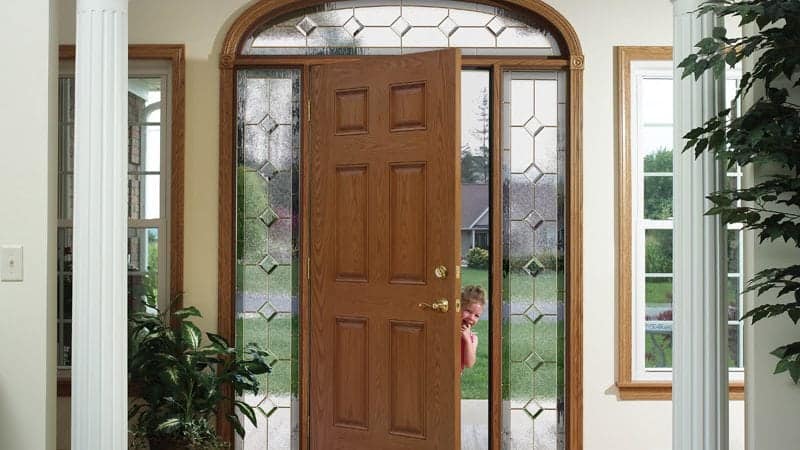
Entry Door Efficiency
As a writer for Conservation Construction I found myself getting a little bogged down with all the technical terms they were using on a daily basis. There are so many in fact, I decided to write an article about the various “Technical Terms” I didn’t understand. Now I can relay just what these terms mean to you the reader. Do any of you get as excited about learning as I do? I hope so, because I’ll be jamming a lot of information in this next article. So gear up for a information adventure. By the end of this article I am confident that you will have a better understanding of what quality in a door actually means.

So let’s start with the first confusing term I came across in my studies with Conservation Construction.
It’s big, it’s bold, it’s this way for a reason, it’s the
Yes, ladies and gentleman that is how you spell it too (for all those grammar enthusiasts out there like me). What exactly does U-Factor mean when we talk about our doors? You might have jumped to driving here–and no, it’s not whether you’re capable of making a u- turn in your car. It’s also not anything like the It factor they talk about on American Idol. It’s not even all the attributes that make you you (even though it sounds like that). This U-Factor is, simply put, a performance rating? Who rates the performances of our doors? Well, I’m glad you asked, it is actually the NFRC. And if you’re as fond of acronyms as me (just kidding, I hate them) then you already know that it stands for the National Fenestration Rating Council NFRC, get it? You may be asking yourself why you should care. I know I was asking myself that same question. What’s this boring council have to do with my doors? Actually, quite a lot. You see if your door is rated correctly it will save you money, and most importantly it’s assured to be Energy Star Qualified! The NFRC label can and will be found on every Energy Star Efficient approved door. Each Energy Star Label ensures that your door meets each of the following five categories:
- U-Factor
- SHGC or Solar heat Gain Coefficient
- Air Leakage
- Visible Transmittance
- Condensation Resistance
So back to that U-Factor from before because we kind of got off topic. The U-Factor measures the rate of heat transfer, and tells you how well the door insulates. U-Factor values generally range from 0.25 to 1.25 and are measured in Btu/h·ft²·° The lower the U-Factor the better door insulates. Which should make the U-Very-happy factor increase. It’s even better news that our front doors and door systems had the lowest U-Factor rating at just .10 which means they are extremely insulating and we received the award for Energy Star Partner Of the year for energy performance.
Solar Heat Gain Coefficient measures how well a product can resist unwanted heat gain, which is especially important during summer cooling season. The lower the number here below 1 the better. Our ProVia doors measured at .16.
Air Leakage measures how much air will enter a room through the door. The lower the number the fewer drafts you will experience.
Visible Transmittance measures how well a product is designed to effectively light your home with daylight, potentially saving you money on artificial lighting. The higher the number, the more natural lights is let in. Our doors scored a .17 on this front.
Condensation Resistance measures how well a door resists the formation of condensation on the inside surface. This rating differs based on separate climate zones where the door is installed. CR is expressed as a number between 1 and 100. The higher the number, the better a product is able to resist condensation.
Our Fiberglass Doors, steel door, and even our patio doors have the best energy star ratings and are made with only the best door materials. In fact any exterior door you choose from conservation construction will save you money with all the energy it’s saving.
So I hope U have enjoyed learning so much about what goes into rating a door as energy efficient. I know I’ve had a blast making you laugh and cry along the way. But seriously, if you are considering a new entry door for any of the following reasons: security, aesthetics, or simply replacing a very old door that just needs to be updated, remember the side effects could be great for you and your energy bill. It’s quite a feat to learn as much as you did, and just know that I appreciate you sticking through all the mumbo-jumbo to get to the end of this article. For more information about our amazing energy star quality doors and windows please visit our website at conservationconstruction.com or give us a call to set up a free consultation. As always it was a pleasure being with you today.
[contact-form-7 id=”4605″ title=”Energy Door Efficiency Contact”]